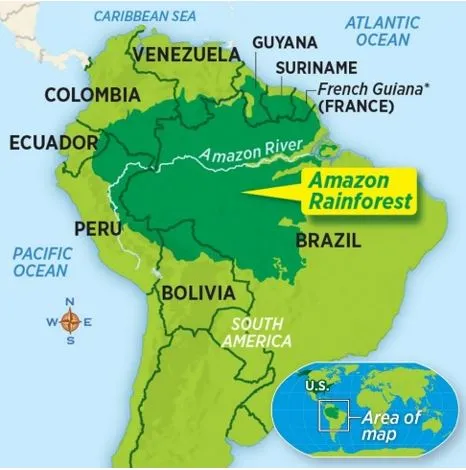

8th October 2024 (13 Topics)
Context
One of the Amazon River's main tributaries has dropped to its lowest level ever recorded. The level of the Negro River at the port of Manaus is at 12.66 metres, compared to a normal level of about 21 metres.
About
- The Rio Negro (Colombia) is one of the largest tributaries of the Amazon River and the largest blackwater river in the world.
- The Rio Negro starts as the Guainía River and flows along the Colombian and Venezuelan border before crossing into Brazil where it becomes the Rio Negro.
- The Negro River drains about 10 per cent of the Amazon basin and is the world's sixth-largest by water volume.
- Manaus, the biggest city in the rainforest, is where the Negro joins the Amazon River.
Fact Box: Amazon River Basin
|



